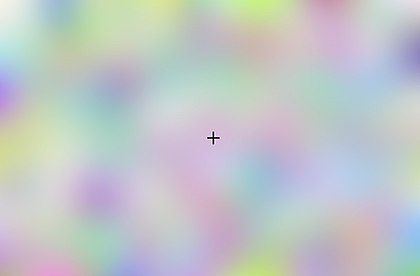The Troxler effect, also known as Troxler fading, is a perceptual illusion named after the Swiss-German philosopher and physician Ignaz Paul Vitalis Troxler (1780–1866), in which an image in peripheral vision disappears when a central stimulus is fixated with a steady gaze.[1]
The effect has been attributed to the adaptation of neurons perceiving stimuli in the visual system, but the phenomenon introduces a paradox into how we see the world:[2]
Because the Troxler effect involves not just the loss of the presence of something in peripheral vision, but a filling-in of the background to replace it, it has been suggested that it involves both the retina and the visual cortex, the former neuronally adapting, and the latter filling in for the lack of information being received from the retina.[3]
See also
- Artificial scotomaPerceptual illusion in which an artificial blind spot is filled in by a twinkling background.

